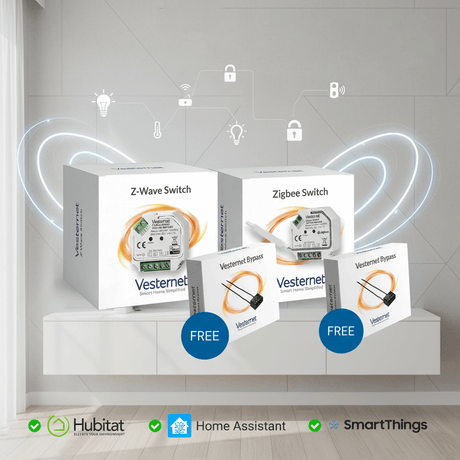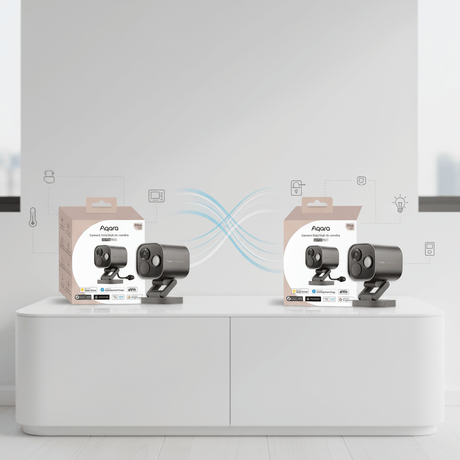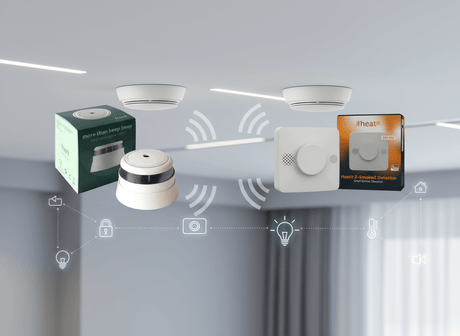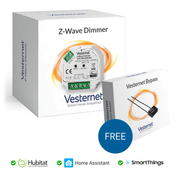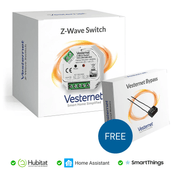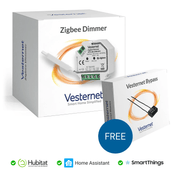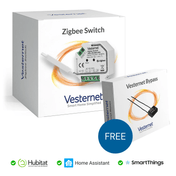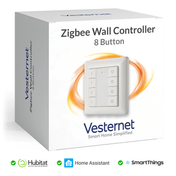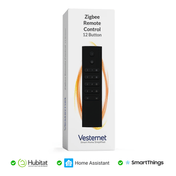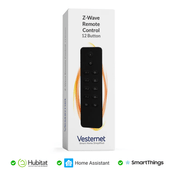DIY smart home enthusiasts often encounter significant challenges when attempting to integrate multiple wireless protocols and devices into a cohesive system. Managing different ecosystems like Zigbee, Z-Wave, and WiFi devices typically requires separate hubs, apps, and control interfaces, creating a fragmented experience that lacks the unified control most homeowners desire. This complexity can be particularly frustrating when trying to create sophisticated automations that span multiple protocols or when attempting to achieve the level of customisation that proprietary systems simply cannot provide.
Zigbee2MQTT emerges as a powerful open-source solution that transforms this challenge into an opportunity for creating truly custom smart home hubs. By acting as a bridge between zigbee2mqtt devices and modern home automation platforms, this innovative software eliminates the need for proprietary gateways whilst providing unprecedented control over your smart home infrastructure. The flexibility to choose your own hardware, customise device behaviour, and integrate with platforms like Home Assistant opens up possibilities that traditional commercial hubs simply cannot match.
This comprehensive guide will take you through the complete technical journey of building and optimising your own Zigbee2MQTT setup. From understanding the fundamental architecture and selecting appropriate hardware to implementing advanced home assistant zigbee2mqtt integrations and troubleshooting complex scenarios, you'll gain the knowledge needed to create a robust, scalable smart home system tailored to your specific requirements.
Understanding Zigbee2MQTT Architecture and Core Components
The foundation of any successful Zigbee2MQTT implementation lies in understanding how its architecture bridges wireless mesh networks with IP-based automation platforms. At its core, Zigbee2MQTT acts as a translator, converting Zigbee protocol messages into MQTT topics that can be easily consumed by home automation systems, creating a seamless integration pathway for hundreds of different device types.

Essential Network Components:
- Coordinator devices that manage the entire Zigbee network and maintain device relationships
- Router devices that extend network range and provide mesh connectivity
- End devices that perform specific functions like sensing or switching
- MQTT broker that handles message routing between Zigbee2MQTT and automation platforms
The mesh topology inherent in Zigbee networks provides exceptional reliability and range extension capabilities. Each router device can relay messages from other devices, creating multiple communication pathways that ensure messages reach their destination even if individual devices fail or experience interference. This self-healing characteristic makes Zigbee particularly well-suited for whole-home automation applications where consistent connectivity is paramount.
Hardware Requirements and USB Controller Selection
Selecting the right USB coordinator represents one of the most critical decisions in your custom hub development journey. The coordinator serves as the central nervous system of your Zigbee network, and its capabilities directly impact network performance, device capacity, and future expansion possibilities. Modern coordinators based on chips like the CC2652R or EFR32MG21 offer superior performance and broader device compatibility compared to older alternatives.
When evaluating coordinator options, consider factors beyond basic functionality. Antenna design significantly impacts signal propagation, with external antennas typically providing better range than built-in alternatives, particularly in challenging RF environments with multiple walls or interference sources.

Key Hardware Considerations:
- Chipset compatibility with current and planned zigbee2mqtt devices
- Maximum device capacity for future network expansion
- Antenna configuration for optimal coverage in your specific environment
- Firmware update capabilities for accessing new features and device support
Installation and Initial Configuration Setup
The installation process begins with establishing a reliable foundation for your Zigbee2MQTT service. Docker deployment offers the most straightforward approach for most users, providing consistent operation across different operating systems whilst simplifying updates and maintenance. This containerised approach also ensures that your Zigbee2MQTT installation remains isolated from other system components, reducing potential conflicts and improving overall stability.

Installation Sequence:
- Flash appropriate firmware to your USB coordinator device
- Configure Docker container with proper device mapping and network settings
- Establish MQTT broker connection and verify communication
- Complete initial configuration file setup with your network preferences
Proper configuration file setup determines how your system will behave and what features will be available. The configuration file controls everything from network security settings to advanced features like device availability monitoring and firmware update capabilities. Taking time to understand these options during initial setup prevents the need for disruptive changes later as your network grows and evolves.
Device Discovery and Network Integration Strategies
Successfully integrating diverse zigbee2mqtt devices requires understanding the pairing process and network topology principles that ensure optimal performance. Each device type—whether sensors, switches, or smart plugs—may require slightly different pairing procedures, and understanding these nuances prevents common integration failures that frustrate many DIY enthusiasts.
Network topology planning becomes increasingly important as your device count grows. Strategic placement of router devices creates strong mesh connections that improve reliability and reduce latency throughout your smart home system. This planning phase should consider both current needs and future expansion possibilities.
Integration Best Practices:
- Begin with mains-powered devices to establish a strong router foundation
- Add battery-powered sensors and switches after network stability is confirmed
- Monitor network mapping to identify weak connections or isolated devices
- Test device responsiveness and automation reliability before expanding further
Advanced Home Assistant Integration and Automation
The true power of home assistant zigbee2mqtt integration emerges when you begin creating sophisticated automations that leverage the rich device data and control capabilities this combination provides. Unlike proprietary systems with limited customisation options, this open approach allows you to create complex logic that responds to multiple sensors, environmental conditions, and even external services like home assistant spotify for coordinated lighting and audio experiences.
Advanced Integration Features:
- Real-time device availability monitoring with automatic offline detection
- Over-the-air firmware updates for supported devices
- Custom device configuration and behaviour modification
- Detailed logging and diagnostics for troubleshooting
Entity configuration within Home Assistant allows you to fine-tune how each device appears and behaves within your automation platform. This includes customising device names, grouping related entities, and setting up device-specific automation triggers that respond to subtle state changes or environmental conditions that commercial systems might overlook.
Network Management and Range Extension Solutions
As your smart home network expands, effective range management becomes essential for maintaining consistent performance across larger spaces. Strategic placement of router devices creates a robust mesh infrastructure that can handle increasing device counts whilst maintaining responsive communication throughout your property.
Range extension goes beyond simply adding more devices; it requires understanding signal propagation patterns and identifying optimal locations for maximum network benefit. Each additional router device should strengthen the overall network topology rather than merely extending reach to a specific area.
Network Expansion Strategies:
- Position router devices at network periphery to extend coverage naturally
- Monitor link quality metrics to identify weak connections requiring attention
- Use network visualisation tools to understand traffic patterns and optimise routing
- Plan for redundant pathways in critical areas to ensure reliability
Security Implementation and Best Practices
Custom hub development demands careful attention to security implementation, as your system lacks the built-in protections that commercial solutions might provide. Network key management represents the first line of defence, ensuring that only authorised devices can join your Zigbee network and preventing unauthorised access to your smart home infrastructure.
Essential Security Measures:
- Generate unique network keys rather than using default values
- Implement MQTT broker authentication with individual user credentials
- Enable encryption for all MQTT communications
- Regularly update firmware on coordinators and devices
MQTT broker security extends beyond basic authentication to include proper network segmentation and access control. Implementing these measures ensures that your smart home data remains private and that external threats cannot compromise your automation system or access sensitive information about your daily routines and occupancy patterns.
Troubleshooting Common Integration Challenges
Even well-planned Zigbee2MQTT installations occasionally encounter integration challenges that require systematic troubleshooting approaches. Device pairing failures, connectivity issues, and performance degradation can often be resolved through methodical diagnosis and targeted interventions that address root causes rather than symptoms.
Performance optimisation becomes particularly important as your network scales beyond basic implementations. Understanding how to interpret diagnostic information and adjust system parameters ensures that your custom smart home hub continues to perform reliably as complexity increases and device counts grow.

Common Troubleshooting Scenarios:
- Intermittent device responsiveness requiring network analysis and optimisation
- Pairing failures with specific device types or manufacturers
- Range limitations in specific areas requiring strategic router placement
- Performance degradation during peak usage periods
Conclusion
Building custom smart home hubs with Zigbee2MQTT provides technical enthusiasts with unparalleled flexibility, control, and learning opportunities that commercial solutions simply cannot match. The open-source approach allows you to understand every aspect of your system, customize behaviour to your exact requirements, and integrate with virtually any automation platform or service, creating truly personalised smart home experiences.
Starting your DIY journey with simple device integrations and gradually expanding your system provides the most rewarding path to smart home mastery. Begin with basic sensors and switches to understand the fundamentals, then progressively add more sophisticated devices and automations as your confidence and knowledge grow. The satisfaction of creating a completely customised system that responds exactly to your lifestyle and preferences far exceeds the capabilities of any off-the-shelf solution.
Ready to explore the hardware components for your custom Zigbee2MQTT hub? Browse Vesternet's comprehensive selection of USB controllers, gateway devices, and wireless switches to build your ideal smart home system. Our expert team is available to provide guidance on protocol compatibility and device selection to help you create the perfect DIY automation setup.


